
6 Best Restaurant POS Systems
In the ever-changing world of the restaurant industry, choosing the right Point-of-Sale (POS) system is a crucial part of ensuring your business can run smoothly. You want a POS that is reliable, modern, efficient, analytical, and is able to grow with you – while also being cost effective and helping to improve overall customer satisfaction. There are a lot of factors to consider that can make the process feel overwhelming, which is why we’ve created this overview to help you simplify and stress a bit less during the decision-making process.
We’ve rounded up six leading POS systems for 2024 based on factors like usability, features, pricing, customer support, and user reviews. These include Qu, Revel Systems, Toast, Clover, Square POS, and Otter. It all starts with identifying your expectations and needs and then gathering information from there. Start the process off by reading through our seven steps below and ultimately choosing the POS that best suits your business.
Choosing a Restaurant POS System: 7 Steps
You know you need the best POS for your business, but how do you go about choosing one? We’ve got you covered. Check out these seven steps that take you through the best ways to further gather information and better understand what it is you’re looking for. These steps are based on your type of restaurant, your long- and short-term goals, and important aspects of POS systems that go far beyond the software itself – such as customer support. These guidelines will help you filter through all the options and choose the best POS system for your restaurant and your team.
Step 1: Assess your business needs
Before diving into the best POS system options, take time to define your restaurant’s specific needs. Consider these factors:
- Restaurant type: The needs of a fine dining restaurant will differ from those of a fast-casual or quick-service restaurant. Keep in mind aspects like:
- Table management: Essential for sit-down restaurants that need to manage reservations, table numbers, and guest waitlists.
- Online ordering: A seamless integration for online orders is a must for restaurants that offer delivery or takeout services.
- Inventory tracking: Useful for managing stock levels, reducing waste, and ensuring ingredient availability.
- Integrations: Consider other systems you need to integrate with, such as accounting software, loyalty programs, or employee scheduling tools. Ensure the POS system you choose can integrate smoothly with these tools.
- Number of locations: How many locations does your restaurant have? Multi-location management requires a scalable solution with all-in-one centralized reporting and management apps.
Step 2: Budget planning
Budgeting – this is the fun part, right? Establishing a clear budget is essential for selecting a POS system that fits your financial goals. As you have further discussions and learn more about add-ons, leave some wiggle room in your budget to adapt to the more modern solutions, but always ensure your bottom line is top-of-mind. Here’s how you can approach budget planning:
- Initial costs: Factor in the cost of hardware (terminals, printers, etc.), software licenses, and installation fees. Some systems offer hardware bundles with their software, while others require separate purchases.
- Ongoing costs: Include monthly or annual software subscription fees, transaction fees, and any additional charges for features or integrations. Be aware of any hidden fees that may arise, such as support costs or upgrade fees.
- Return on investment (ROI): Consider your potential return on investment. A higher initial cost may be justified if the system offers significant improvements in operational efficiency, increased revenue, or even customer retention.
Step 3: Research your options
Keep on reading to see our comprehensive list of options, and use that as a starting place for your research. If you want to do additional research, here’s how to get started:
- Compile a list of options: Start with a list of POS systems that meet your initial criteria. Use online resources, community reviews, and industry word-of-mouth to select some top contenders.
- Compare features: Evaluate the features offered by each point of sale system. Create a comparison chart to evaluate how each option aligns with your business needs, such as order management, reporting, and software integration options.
- Note the pricing: Compare the pricing structures of different POS systems. Look for transparency in pricing and consider both the initial and ongoing costs.
- Check compatibility: Ensure the POS systems you’re considering are compatible with your existing hardware (if any) and other systems you use. Consider the ones that can meet all your needs in one system as top options.
Step 4: Schedule demos
Seeing in real-time how a POS system works, looks, and (for the user experience) feels is a must. Demos can be short, as your time is valuable, but they provide really tangible overviews and showcase the product visually. Here’s how to make the most of your demos:
- Test key features: During the demo, focus on testing the features that are most important for your restaurant – such as in-app marketing or reporting tools. Pay attention to how user-friendly the interface is and how easily you can perform your day-to-day tasks and manage orders.
- Involve your team: Your staff will be the ones using the system most, so why not ask for their opinions? Include one or two key team members to ask questions that are specific to your restaurant, and listen to their feedback about the POS’s functionality and overall value.
Step 5: Check out customer reviews and testimonials
You can listen to sales teams all day long, but there’s nobody better to describe a product than existing users. Ask around in your community what POS systems they love and understand what their pain points are. Additionally, look online for customer reviews and overall ratings. Here’s some tips on how to gather and assess user feedback:
- Read online reviews: Look for reviews on Trustpilot, forums, and even social media. Pay attention to both positive and negative feedback to get a balanced perspective, and see how the companies are responding to these comments.
- Request testimonials: Ask POS vendors for testimonials and reviews from their current customers. A lot of them are featured on their websites, so a little browsing makes it easier for you to look up on your own.
- Identify common issues: Assess any recurring issues mentioned in reviews or testimonials. This can help you anticipate potential problems and decide which POS can most positively impact your restaurant.
Step 6: Overview of customer support
You want a POS that has a support team that feels like an extension of your own. When problems or questions arise, you shouldn’t have to stress about solving them on your own. And if you’re switching to a new POS from an existing one, you’ll want to ensure that the process can be as seamless as possible. Consider these factors when evaluating customer support:
- Support channel options: Check what support channels are available (phone, email, online chat, etc.). You may even have the option for a designated customer support member to be your go-to person. Ensure the POS provider of your choice offers responsive and accessible support.
- Training and onboarding: Getting set up and training your staff needs to be smooth so your business can continue as usual or get opened ASAP. Ask what training resources are available for you and your staff and how long the onboarding process takes.
- Service level agreements (SLAs): Review the service level agreements to understand the system’s support response times and issue resolution processes. Again, you want to feel confident that you’ll have support every step of the way, even after onboarding and installation are completed.
Step 7: Make your decision
It’s time to choose! Sit down with all the information you’ve gathered, and don’t hesitate to reach out with additional questions, too. Before you make that final decision, consider one last time how to balance features, budget, and long-term needs:
- Weigh the options: Consider the overall value each POS system offers in relation to your budget and requirements. Balance the importance of features with the associated costs.
- Long-term vision: Think about the long-term implications, such as scalability, future upgrades, and potential changes in your business needs. Choose a system that can grow with your restaurant and adapt as your needs change or expand.
- Ask your team: Whether it’s your business partner or lead General Manager, input goes a long way. Lay out the facts for them and weigh the options together, considering the POS from all angles of the business.
Popular POS Systems For Restaurants
Now that you know how to go about assessing the different POS options for your restaurant, it’s time to dive deeper into your research. There are many POS systems available, but certain systems have become popular due to their reliability, features, and customer satisfaction.
We’ve outlined six leading POS systems – including their key features, pricing, and pros & cons – to give you a head start on making your decision process simpler. Remember, this decision all begins with understanding your own business needs first and being open to the system that best fits where you’re at and where you want to go.
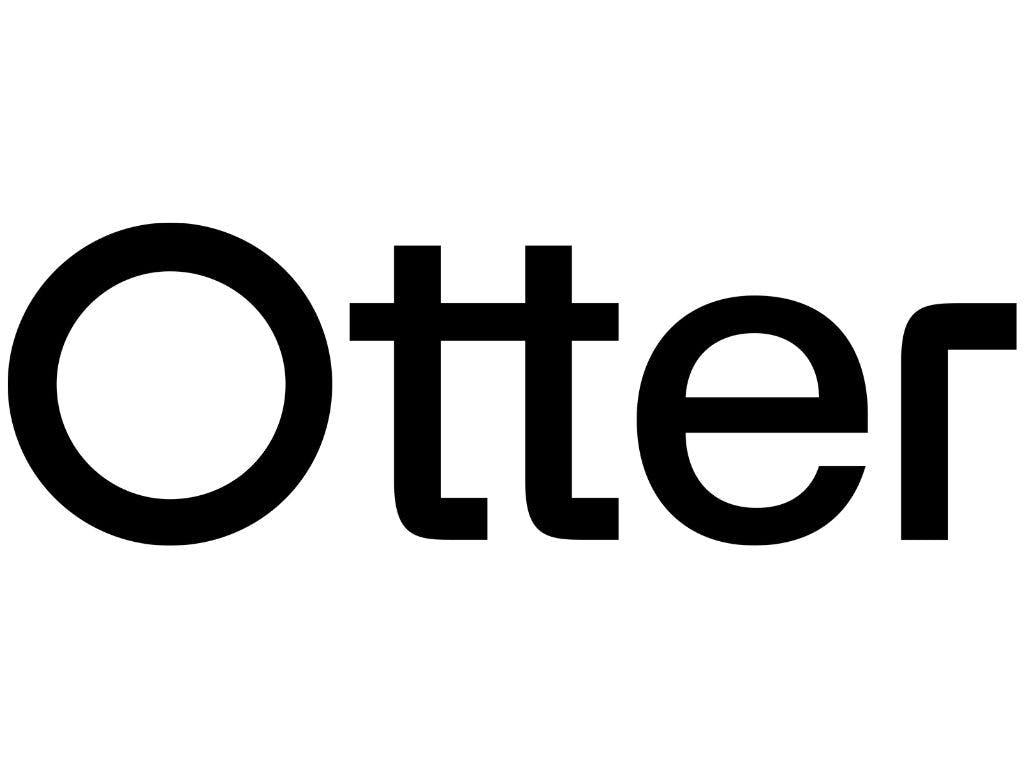
1. Otter
Overview
Otter POS was built to simplify multi-channel operations – combining everything you need to run your business into one system. Otter offers consolidated ordering channels, 100+ apps, native integrations, data reports, and more so restaurants can optimize operations and prevent errors in real-time. They cater to various restaurant types, from fast-casual franchises to local community favorites, providing a flexible, affordable, and scalable solution.
Key Features
- 24/7 Order Reliability: Reliable software and top of the line tech that keeps you online and processing orders.
- Real-Time Analytics: Offers actionable insights through real-time data to help optimize operations, decrease errors, and increase profitability.
- All-in-one: This natively built Omnichannel POS system lets you consolidate online, delivery, and takeout orders into one platform.
Pricing
Otter POS pricing starts at around $59/mo and has some of the lowest processing fees in the restaurant industry.
Pros
- Native Integration: Otter is the first POS designed with native integrations to encompass all your restaurant apps and needs in one system.
- Actionable Insights: Real-time analytics help drive informed business decisions.
- Multi-location capabilities: Centralize and edit menus, make sales, and more across locations with one platform.
Cons
- Not ideal for restaurants who do not do online ordering. Otter POS is natively multi-channel and works best for those who use multiple channels to collect orders.
- In its current state, Otter POS works best for quick service restaurants who emphasize counter service rather than tableside.
Best For
Restaurants looking for a flexible, modern, and reliable POS system that adapts to various business needs and scales with growth. Otter helps streamline operations, is ideal for businesses that are looking to increase revenue, get organized, and better understand how their business is performing and identify areas of improvement through real-time data.
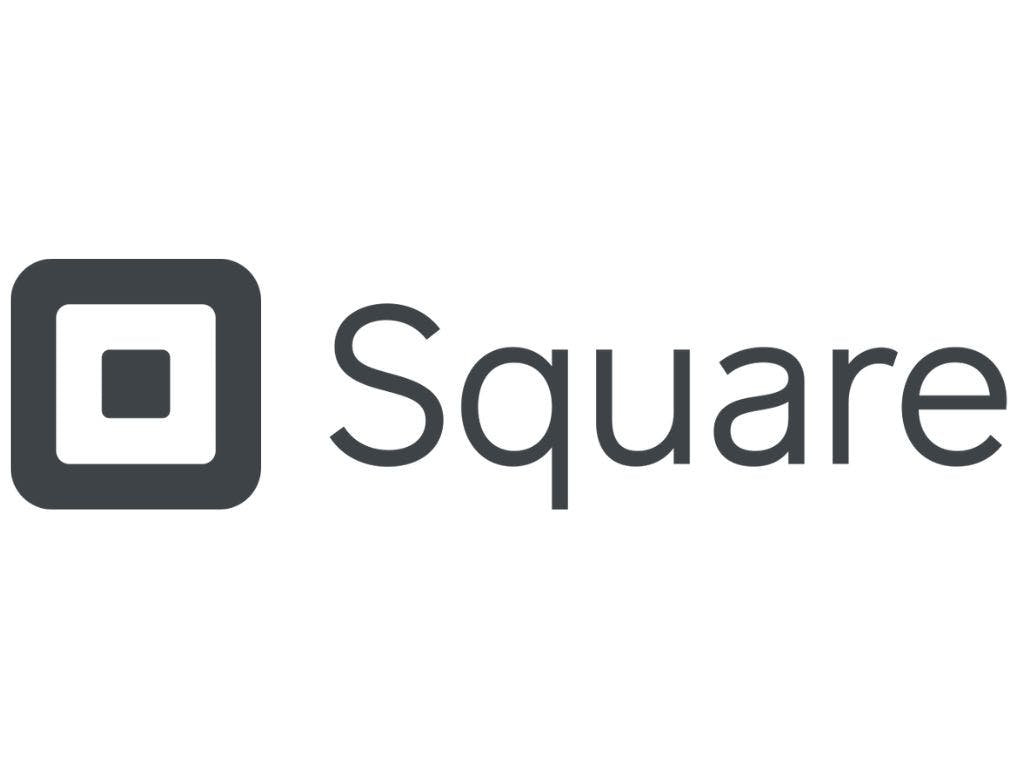
2. Square for Restaurants
Overview
Square for Restaurants offers a straightforward and cost-effective POS solution with no monthly fees. It’s designed for smaller establishments or those just starting out, providing a simple and transparent pricing model.
Key Features
- Affordable Pricing: No monthly fees, with clear transaction costs, making it a budget-friendly option.
- Easy Setup: Simple installation and setup process with minimal training required for staff.
- Integrated Payments: Processes payments seamlessly and provides detailed sales reports to help manage finances.
Pricing
Square for Restaurants is free for basic features, with optional add-ons available for additional functionalities. Transaction fees are 2.6% + 10¢ per swipe, dip, or tap payments.
Pros
- Cost-Effective: No monthly fees and transparent pricing structure make this POS an affordable choice.
- Simple Setup: Quick and easy to set up with minimal training required.
- Integrated Payments: All-in-one system for payments and POS functionality.
Cons
- Limited Features: The basic plan may lack advanced features needed by larger or more complex restaurants.
- Transaction Fees: Transaction fees may be higher compared to some other POS systems, potentially affecting overall costs.
Best For
Small to mid-sized restaurants seeking an affordable, easy-to-use POS system with integrated payment processing. Square for Restaurants is ideal for businesses that require a straightforward and cost-effective solution.
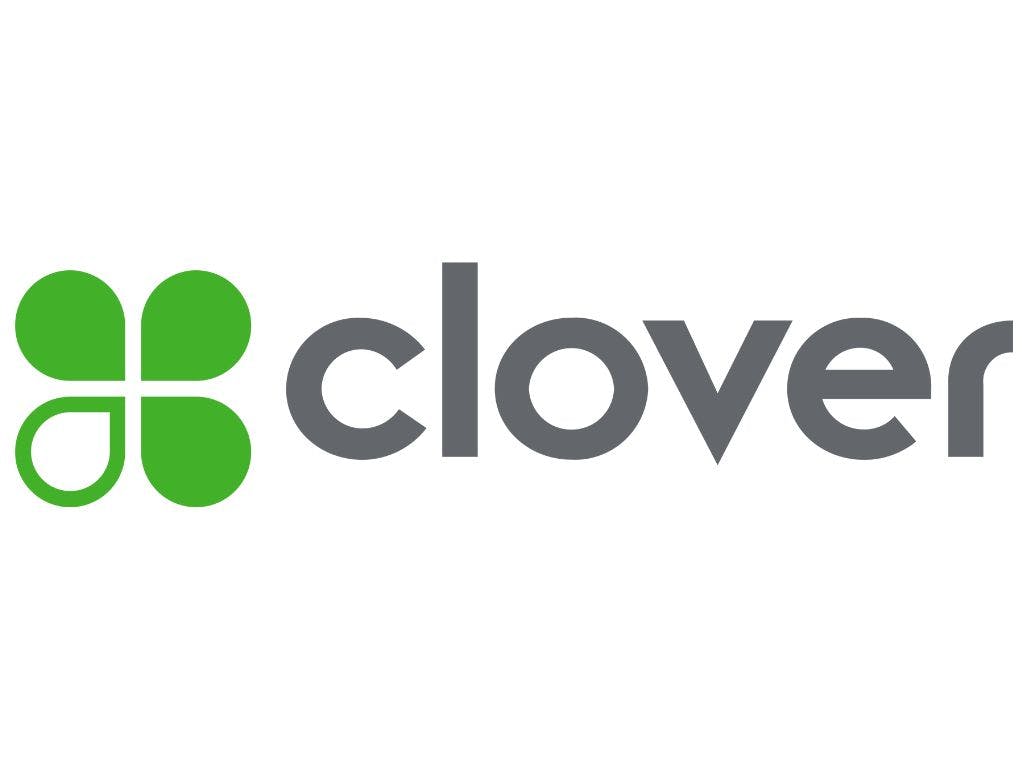
3. Clover
Overview
Clover provides a flexible and customizable POS system with a range of hardware options and a robust app marketplace. Its adaptability makes it suitable for various types of restaurants, from small cafes to larger dining establishments.
Key Features
- Customizable Hardware: Offers a range of hardware options, including different terminals, printers, and peripherals, allowing businesses to choose what best fits their needs.
- App Marketplace: Access a variety of apps through Clover’s marketplace for added functionalities such as inventory management, employee scheduling, and customer loyalty programs.
- User-Friendly Interface: Features an easy-to-navigate design that simplifies daily operations and staff training.
Pricing
Clover’s pricing starts at around $14.95 per month per terminal for the basic plan. Additional costs are incurred for hardware and premium features, with transaction fees typically around 2.6% + 10¢ per transaction.
Pros
- Customizable Solutions: The wide range of hardware and app options allows for a tailored POS system that meets specific business needs.
- Affordable Base Pricing: Low starting cost for essential features makes Toast accessible for smaller establishments.
- Ease of Use: Intuitive interface is easy to learn and operate, reducing training time.
Cons
- Hardware Costs: Additional costs for hardware and accessories can add up, impacting the overall budget.
- Feature Costs: Some advanced features require paid apps or upgrades, which may increase costs.
Best For
Restaurants seeking a customizable POS system with a variety of hardware options and app integrations. Clover is ideal for businesses that want a flexible solution tailored to their specific operational needs.
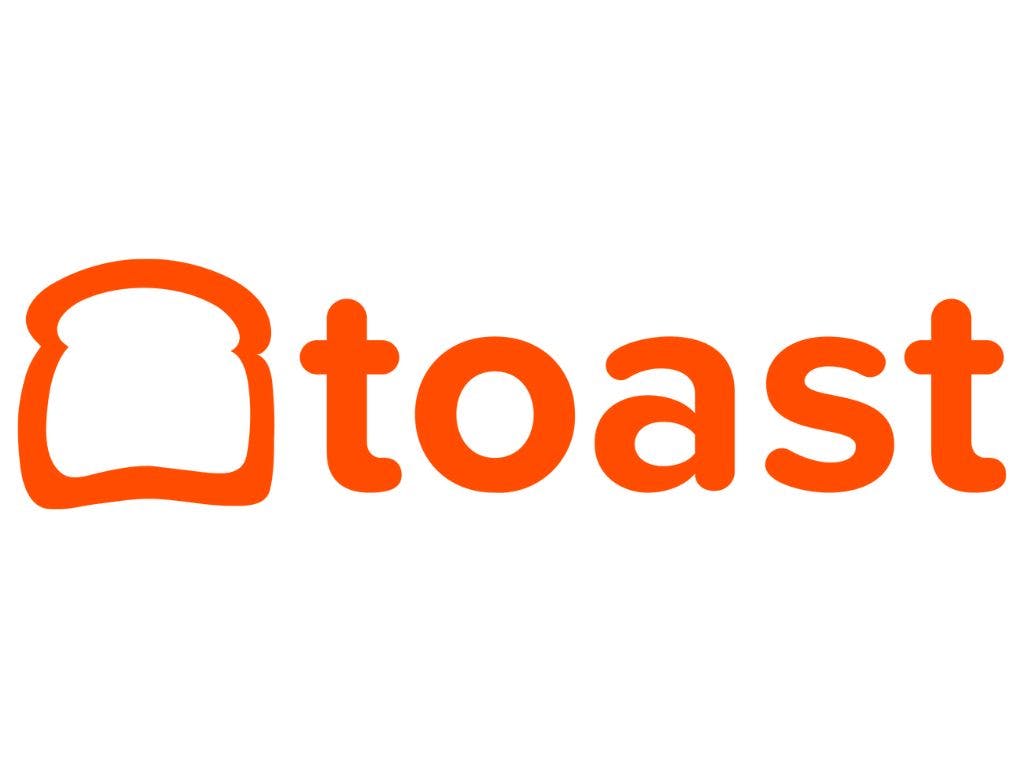
4. Toast POS
Overview
Toast is an all-in-one POS system designed specifically for the restaurant industry. It offers a comprehensive solution that integrates POS functionality with various restaurant management tools, making it a popular choice for establishments that need a unified system.
Key Features
- Unified Platform: Toast integrates POS services with online ordering, delivery management, and loyalty programs, providing a seamless experience for both staff and customers.
- Restaurant-Specific Tools: Includes features for table management, menu customization, and staff scheduling, tailored to the unique needs of restaurants.
- Customer Engagement: Built-in marketing tools and loyalty programs help drive repeat business and enhance customer relationships.
Pricing
Toast’s base plan starts at $0, with a transaction fee of 2.6% + 10¢ per transaction. Additional features and hardware options can bring the total cost to around $100 to $200 per month per terminal, depending on your specific needs and configurations.
Pros
- Comprehensive Solution: Covers all aspects of restaurant management, from POS to online ordering and customer engagement.
- Tailored for Restaurants: Designed with restaurant-specific features that address common industry challenges.
- Strong Customer Support: Known for responsive and effective customer service.
Cons
- Additional Costs: Costs can increase with the addition of features and hardware, making it more expensive than some competitors.
- Transaction Fees: The transaction fees may be higher compared to other POS systems, which could impact overall costs.
Best For
Restaurants seeking an all-in-one POS system that integrates POS, online ordering, and customer engagement tools. Toast is ideal for businesses that require a comprehensive solution with robust features tailored to the food service industry.
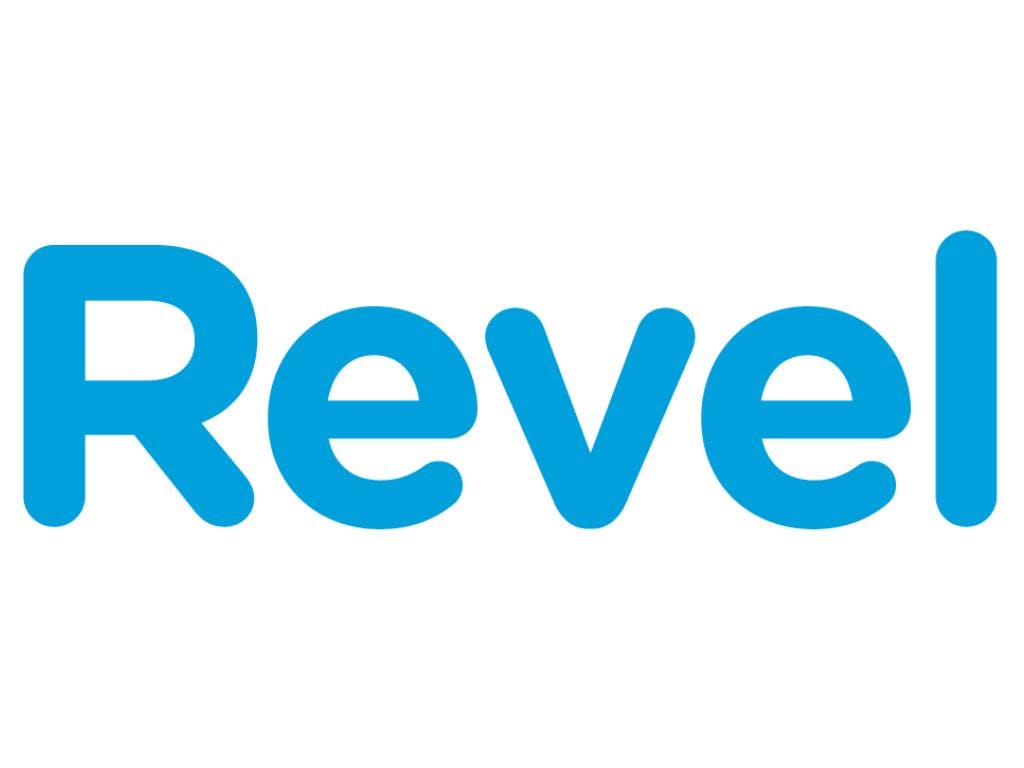
5. Revel Systems
Overview
Revel Systems is a versatile POS solution known for its scalability and extensive third-party integrations. It’s suitable for both single-location establishments and multi-unit chains, offering flexibility and adaptability to various business sizes and needs.
Key Features
- Scalable Architecture: Revel Systems supports businesses of all sizes, from small cafes to large restaurant chains.
- Robust Integrations: The system integrates seamlessly with a wide range of third-party applications, including accounting software, loyalty programs, and inventory management tools.
- Flexible Deployment: Revel is available on both iPad and Android devices, offering flexibility in hardware choices.
Pricing
Revel Systems starts at $99 per month per terminal. There is also a setup fee that ranges from $0 to $1,000, depending on the package and services selected. Additional costs may apply for hardware and advanced features.
Pros
- Highly Scalable: Suitable for businesses with varying sizes and growth potential.
- Extensive Integrations: Connects with numerous third-party applications to enhance functionality.
- Device Flexibility: Available on both iPad and Android, providing hardware options based on preference.
Cons
- Complexity: The wide range of features and integrations can be complex to configure and may require additional training.
- Initial Costs: Setup fees and potential hardware costs can be high, which may be a barrier for smaller businesses.
Best For
Restaurants that need a flexible, scalable POS system with extensive integration options. Revel Systems is ideal for businesses that anticipate growth or require a high level of customization and connectivity with other applications.
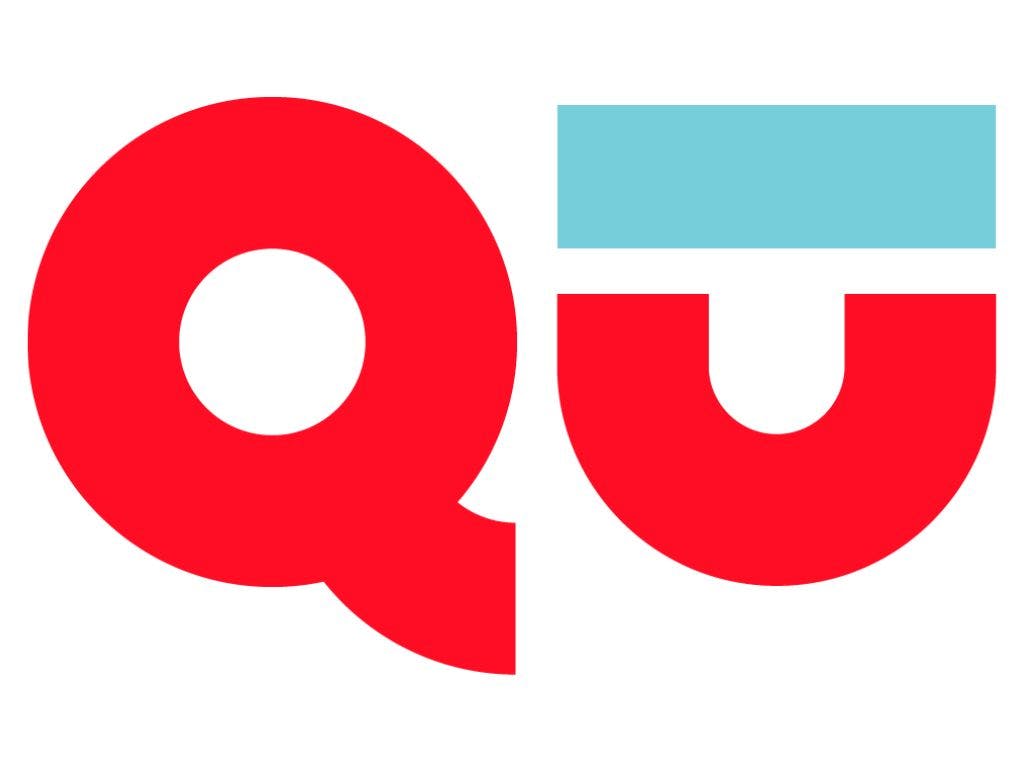
6. Qu (Qu POS)
Overview
Qu POS, often referred to simply as Qu, is a modern POS system renowned for its intuitive interface and powerful analytics capabilities. Designed to cater to the needs of both small and large establishments, Qu emphasizes real-time data and ease of use, making it a solid choice for restaurants seeking detailed insights into their operations.
Key Features
- Intuitive Interface: Qu boasts a user-friendly design that simplifies the learning curve for new staff and streamlines daily operations.
- Advanced Analytics: The system provides real-time data and in-depth analytics, enabling restaurants to monitor sales trends, inventory levels, and customer preferences.
- Customizable Reporting: Users can create tailored reports to meet specific business needs, helping to track performance and make data-driven decisions.
Pricing
Qu typically starts at around $100 per month per terminal. This base price covers essential features, but additional costs may apply for advanced functionalities, integrations, and premium support.
Pros
- User-Friendly Design: The intuitive interface reduces training time and improves efficiency.
- Comprehensive Analytics: Advanced reporting tools offer valuable insights into various aspects of your business.
- Customization Options: Reports and dashboards can be customized to fit your restaurant’s specific needs, providing relevant data for decision-making.
Cons
- Higher Cost: Qu’s pricing is on the higher side compared to some competitors, which may be a consideration for smaller establishments.
- Feature Overload: The extensive feature set may be overwhelming for smaller restaurants or those with simpler operational needs.
Best For
Restaurants seeking a robust POS system with advanced analytics and ease-of-use. Qu is ideal for businesses that require detailed data insights to optimize their operations and make informed decisions.
FAQs
With the key details for each of today’s leading POS systems highlighted above, you now have all the information you need to make critical decisions on which platform is best for your restaurant. To make the process easier for you, we’ve highlighted some of the most common questions surrounding POS systems, and offer our restaurant tech expertise in helping you choose the right one. Use this FAQ section to gain a stronger understanding of what a POS system is, how it benefits your restaurant’s bottom line, and which platform is right for your business’s needs.
General POS Questions
What is a POS system?
A POS (Point-Of-Sale) system is the heart of your restaurant’s activities. Whenever a customer places an order with your restaurant, your POS system records key data from it in real-time, confirming the sale and passing critical information to various members of your team.
What are some typical features of a POS system?
POS systems usually include tools for payment processing, inventory management, menu management, online ordering, QR code menus, employee management activities, and credit card processing. Leading POS platforms let you utilize these features from a single piece of hardware.
What are the most common components of a POS system?
Typical POS hardware uses a central “terminal” platform – these days, often an iPad-like tablet – that connects to other touchscreens and devices throughout your restaurant. Other essential elements of a POS system include a device for payment processing, a Kitchen Display System, card readers, and mobile POS devices for tableside ordering.
What kinds of restaurants use POS systems?
Today, nearly every kind of restaurant business uses at least one POS tool to gain critical operating information from their orders. The usefulness of a POS system isn’t limited by size or restaurant type – even small businesses, cafes, and food trucks find value in POS tools.
Can I use a POS system offline?
In most cases, you can still use certain functions of your POS terminal even when it isn’t connected to the internet in a limited “offline mode”. Some cloud-based POS system features, like those offered by Toast POS or Square, may be disabled in this mode.
POS Payment Questions
How do I pay for my POS system?
Restaurant owners usually pay for their POS terminal (or “starter kit”) and receipt printers upfront, then pay monthly for continued access to their service. Many POS features are paid for through “processing fees”, which incur every time you process an order.
Are any additional fees required for my POS system?
Some restaurants may choose to integrate online delivery services, like DoorDash or Uber Eats, into their POS system. These platforms may offer introductory free plans, but usually require additional payment to continue using.
Which features of a POS system incur processing fees?
Any action associated with processing an order typically has an attached fee. Full-service restaurants and food trucks can expect fees for contactless payment, delivery checkouts, and gift card processing.
Which POS features do not incur processing fees?
Any action that isn’t associated with processing an order usually doesn’t require a fee. Common POS tasks like editing menu items, opening ecommerce storefronts, updating floor plans, or distributing customer relationship management (CRM) material aren’t typically charged.
How is a POS system more cost-effective than a typical register?
The best POS systems for restaurants strengthen speed, efficiency, and productivity across your entire business. These tools make collecting customer data and strengthening customer experiences easy, which can encourage more orders and benefit your bottom line.
POS Functionality Questions
What are the basic features provided by a POS system?
Today, every reputable POS platform includes a payment processor, customer data tools, and management systems for both orders and menus.
What are some advanced features of modern POS systems?
The best POS systems for restaurants incorporate tools for simplifying the day-to-day tasks of business owners, enhancing dining experiences, and making multi-location management easier. These features streamline operations across your entire restaurant brand!
Can a POS system connect with any of my other restaurant hardware?
Yes! Today’s leading POS platforms can integrate with cash drawers, kiosks, card readers, and more – oftentimes with no additional upfront costs.
What should I do when a new POS system is released?
Modern POS brands have a variety of upgrade plans available to restaurant owners at any time. If you’re looking to enhance your existing POS hardware, or purchase new tools to increase its functionality, contact your provider.
How do POS systems help with inventory management?
Inventory cataloging and organization features are standard with most leading POS systems today. By using a POS tool to regularly understand what your restaurant has on-hand, you can make better decisions about what dishes to offer, and when to pull items from service.
POS Comparison Questions
Which restaurant POS platform is the best if I’m looking to minimize costs?
If you’re looking for the most cost-efficient restaurant POS system featured here, Square for Restaurants is your best choice. The platform’s basic features are free for all restaurants, and processing fees for each order are relatively low.
Keep in mind, though – a basic set of POS tools usually only covers some activities for a single restaurant location, which can make long-term expansion and streamlining difficult. The right restaurant POS for your budget is typically better than the lowest-cost option.
Which restaurant POS platform is the best for customer support?
Out of the six POS systems listed here, Toast POS usually wins on customer support functionality. The Toast platform is easy-to-use, and the brand’s customer technicians are well-regarded in the restaurant industry.
While Toast’s customer support abilities are strong, remember that they come at a premium. Toast POS has the highest additional and transactional fees on this list, which can harm a restaurant’s bottom line (especially if customer support isn’t needed often).
Which restaurant POS system is the best for ease-of-use?
Qu POS’s accessibility features have been reviewed well by a range of clients and critics across the restaurant industry, and are ideal for restaurateurs looking to take action and onboard new staff as quickly as possible.
Something else that Qu has been noted for, however, is that the amount of services it provides can often be overwhelming (and costly) to new users. For restaurants that don’t need extensive tools and features, Qu isn’t typically recommended.
Which restaurant POS system is the best for customizability?
As a well-established platform in the modern restaurant landscape, Clover POS’s hardware setup and user interface is the most customizable here. Restaurants pick which parts of the Clover ecosystem suit their needs best, eliminating any redundancies.
Unlike most other restaurant POS systems, though, Clover’s range of personalization features can be complex and time-consuming, especially during restaurant service. This system isn’t advised for fast-paced restaurant environments that change often.
Which restaurant POS system is the best for cross-platform integrations?
With over 100 different hardware and software integrations scalable across small-to-medium-sized, mid-market, and enterprise-level restaurant businesses, Otter POS offers the best amount of cross-platform integrations of any system on this list.
Otter POS is a strong choice for restaurant owners switching over from another platform, or that already use other digital restaurant tools. The system’s diversity of integrations ensures that staff members can update menus and customer data easily.
Which restaurant POS system is the best for profitability?
As a platform that strengthens speed, organization, and productivity across a restaurant’s entire workflow, the solutions provided by Otter POS are the leading choice for owners. Otter enhances orders over multiple storefronts, increasing profit on a brand-wide scale.
The Otter POS system’s all-in-one management functionality eliminates the need for excessive hardware or staff, minimizing a restaurant’s overhead costs. With Otter, restaurateurs earn more on every order, no matter where they come from.
Otter POS Questions
What are some of the unique features that Otter POS provides?
In addition to an all-in-one suite of powerful order and menu management tools, Otter POS also includes tools for live data analytics, store monitoring, digital marketing, online ordering, virtual brands, and more! Otter POS is well-equipped for the needs of today’s restaurant owners.
What does Otter POS cost?
We offer a variety of pricing plans to meet your restaurant’s unique needs. Our “Starter” package is available from $19/mo (with 3.9% + 15¢/transaction), and our “Main” package begins at $59/mo (with 2.39% + 15¢/transaction). More information is available on our Pricing page.
How can Otter POS benefit my restaurant?
With Otter POS, it’s easier to manage every element of your restaurant’s service, back-of-house operations, and location management. Otter’s POS tools simplify and streamline all day-to-day restaurant duties, empowering your staff and strengthening your profit margins on every order.
Is Otter POS right for my restaurant’s size and type?
Yes! Otter POS’s all-in-one features are made for the success of every restaurant, regardless of how many locations you have or what you serve. Our solution suite is scalable to any number of storefronts, and strengthens operational efficiency and productivity across any kind of team.
What restaurants are currently using Otter POS?
Our client base is global, diverse, and heavily successful. Otter POS is currently strengthening the orders, activities, and revenue of over 275,000 restaurants across the globe. Some of our most recognizable users include Denny’s, Ben & Jerry’s, and the Dhanani Group.
Does Otter POS integrate with any other POS systems or tools?
Yes! The Otter POS system has over 100 unique integrations, and connects seamlessly with platforms like TouchBistro, SpotOn, Toast POS, Square POS, and the Lightspeed Restaurant suite. See our full list of restaurant software integrations here!
How does Otter POS benefit my staff?
No matter what your team members are responsible for, Otter POS can help them succeed. Our tools simplify the process of accepting orders, cataloging inventory, running in-app promotions, updating menus, collecting data, and much more, giving your staff more time to serve great food.
Conclusion
Choosing the right POS system is essential for optimizing restaurant operations, improving customer service, and managing finances effectively. Each of the POS systems we’ve mentioned – Qu, Revel Systems, Toast, Clover, Square for Restaurants, and Otter – offers distinct advantages tailored to different types of restaurants. Here’s a quick recap to help you make your decision:
- Qu: Ideal for restaurants seeking advanced analytics and an intuitive interface, though it comes at a higher cost.
- Revel Systems: Suitable for businesses of all sizes with extensive integration needs and scalability, though it may involve complex setup and higher initial costs.
- Toast: A comprehensive all-in-one solution designed for the restaurant industry, with strong customer support but potentially higher costs for additional features.
- Clover: Offers a customizable POS system with flexible hardware and app options, though additional costs for hardware and advanced features may apply.
- Square for Restaurants: A cost-effective and simple solution for smaller establishments, with no monthly fees but limited advanced features.
- Otter POS: Provides a modern, integrated POS system with real-time analytics and flexibility, though pricing variability and a learning curve may be considerations.
Evaluate your restaurant’s specific needs, budget, and growth potential to select the POS system that best aligns with your operational goals. Investing in the right POS system can significantly enhance efficiency, customer satisfaction, and overall business success.
Boost your restaurant’s efficiency and profitability with Otter!
Otter’s all-in-one POS suite is the ideal tool for restaurant owners eager to enhance their restaurant’s day-to-day activities – and revenue. With Otter POS, you gain access to a wide variety of solutions for streamlining menu management, item availability, order processing, and more. You also enjoy exclusive features like live storefront analytics, AI marketing, and digital dine-in service, sharpening your business’s competitive edge. Here are just a few ways that Otter makes your restaurant run smoother, faster, and better:
- Order Management: Collect orders from across every one of your storefronts – in-person, in-app, and online – and control them all through a single dashboard.
- Handoffs: Keep couriers and customers informed about where their food is and when it’s ready for pick-up and delivery.
- Virtual Brands: Unlock new revenue streams with a wide variety of menus and storefronts built for your restaurant’s workflow.
- Revenue Recapture: Simplify the refund dispute process without harming your brand’s integrity, and keep monthly income steady.
- Online Ordering: Maximize your order intake with a free restaurant website, leveraging your unique menu and branding.
Otter POS lets you control all of these solutions (and many more) directly from one terminal, simplifying the entire restaurant management process. Don’t make your restaurant’s daily workflow any harder than it already is – use Otter’s vast array of restaurant tools to empower your staff, impress your customers, and increase your profit.
Book a demo with Otter’s team today, and enjoy the restaurant industry’s most valuable product suite







